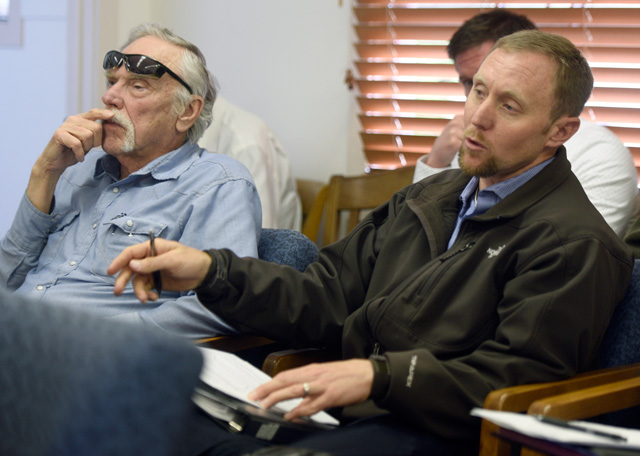Water Agencies Duel Over ‘Dead Pool’
Slick Maneuvering By One Agency Called 'Borderline Criminal' By Another

The bad news is that Lake Cachuma — chief water supply for 225,000 county residents — is now only 7.6 percent full. That’s an unprecedented historic low. Even worse, once the dam drops down to 6.2 percent capacity, what’s left — known to water officials as the “dead pool” — is off-limits for human consumption. Even worse still, relations between water agencies fighting over the last few drops have reached new lows, as well.
The latest flash point came to light two weeks ago when South Coast water agencies belatedly discovered that 2,000-3,000 acre-feet more water from Lake Cachuma had been released this summer than they expected. These releases are legally mandated to satisfy the downstream rights of Lompoc and other communities — Buellton, Solvang, and Santa Ynez���— located below the dam. South Coast water managers said they were led to believe this year’s release would range in size from 8,000-9,000 acre-feet. Instead, it wound up being 11,600.
The surprise of South Coast water agencies was anything but accidental. Instead, it was engineered to perfection by Bruce Wales, general manager of the Santa Ynez River Water Conservation District, who availed himself of highly arcane water-rights language dating back to 1973. This language allowed Wales to secure permits from the federal Bureau of Reclamation — which owns the dam and dictates how it operates — and receive “negative” water credits. This enabled the Santa Ynez district to “borrow” water from future rains and use it today. (The only proviso is that this water must be paid back.)
In person, Wales may come across as the consummate good old boy — “with manure on my boots,” as he put it — but he also holds a PhD in biology and a master’s degree in meteorology, taught at UCSB, and enjoyed a 20-year career as a private water consultant. Wales openly acknowledged his intention was to fool South Coast water agencies. He said he’d been discussing the expanded release with Bureau of Reclamation officials for more than a year. “And I never hid the football from them,” he said. “With these other guys,” Wales said — referring to South Coast water agencies — “I definitely hid the football. If I showed them my football, they would have tried to deflate it or steal it.”
While some South Coast water operators remain incensed, Wales makes no apologies. “We have people on the river who are going to run out of water this year if it doesn’t rain,” he stated. The City of Lompoc, with nearly 10,000 customers, relies exclusively on wells fed by the Santa Ynez River. It has no other sources. Beyond that, Wales elaborated, “The degree of trust is such that we don’t trust each other.”
Santa Barbara city water czar Joshua Haggmark acknowledges what Wales did was perfectly legal but fumes that how he did it was “borderline criminal.” Haggmark is also angry that the Bureau of Reclamation never saw fit to notify any of the other agencies drawing water from Lake Cachuma. “This is extremely frustrating,” he said. Haggmark said he and other South Coast water directors have made their needs and plans explicitly clear; Wales, he said, should have done the same. “This puts us and the lake in a compromised situation.”
With the lake so much lower than expected, Haggmark said, Santa Barbara City Hall will have to accelerate discussions about enacting an outright ban on outdoor irrigation. Likewise, he said, the depleted lake could seriously impede the ability to convey state water pumped into Cachuma to the emergency pumping barge located about 2,000 feet away. (It’s harder to move water over shallow and dry surfaces than deeper, wet ones.) This predicament, in turn, could force water agencies reliant on Cachuma to build a new pipeline, which could cost as much as $2 million. If it doesn’t rain the coming year, those agencies were already contemplating building such a pipeline by September 2018. With the depleted reservoir, it could be September 2017.
Haggmark charged that many of the downstream water agencies have relaxed conservation efforts in recent years. “If they’d maintained those efforts, they wouldn’t have needed the additional water in the first place,” he charged. Haggmark, Wales suggested, “doesn’t know what he’s talking about.” Most of the water agencies alluded to by Haggmark, Wales said, take very little out of the river. Lompoc takes the most and has cut water consumption by 29 percent during the past three years, more than twice the amount ordered by state water officials.



